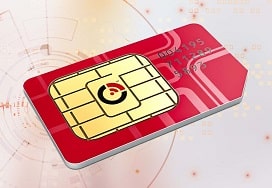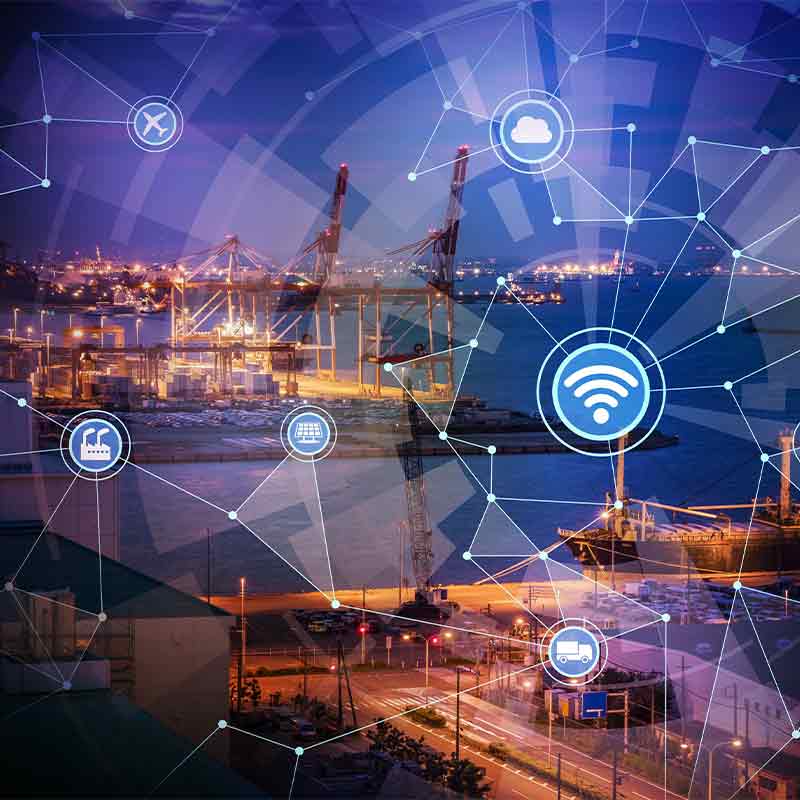Global Nb-Iot Sim Card IoT and M2M SIM Cards
In the quickly evolving panorama of the Internet of Things, connectivity is essential for the seamless functioning of units and techniques. Two principal technologies have emerged as key rivals: Wi-Fi and Low Power Wide Area Networks (LPWAN). Each has its own strengths and weaknesses, making them suitable for different purposes.
Wi-Fi is known for its high-speed data switch and widespread availability, making it a preferred choice for many smart units. Its excessive bandwidth permits for the transmission of enormous quantities of information shortly, best for applications that require high data throughput. This can be particularly helpful in environments like smart homes, the place multiple gadgets could additionally be streaming video or exchanging massive information information simultaneously.
Iot Gsm Sim Card Reliable IoT SIM Cards Global Connectivity
However, the reliance on extra power-consuming hardware could be a downside. Wi-Fi units sometimes require a constant energy supply, which limits their use in functions the place gadgets must function for prolonged durations without frequent recharging or battery substitute. Smart sensors and units utilized in agricultural fields or rural environments typically encounter such limitations - Iot Sim Card India.
LPWAN, on the other hand, provides a particular benefit in energy consumption. Designed for low-power operations, LPWAN technologies permit devices to transmit knowledge over long distances on very little energy. This characteristic makes LPWAN a beautiful choice for IoT use instances involving sensors that have to function in remote locations for extended durations.
The vary of LPWAN is one other compelling function, as it can cowl several kilometers, even in rural settings. In distinction, Wi-Fi tends to have a limited vary, usually encompassing a quantity of hundred meters. This is particularly related in applications involving smart agriculture, where sensors monitoring soil situations or crop health could also be distributed over huge expanses of land.
While Wi-Fi is simpler to deploy, especially in urban areas, the infrastructure required for LPWAN could contain more complexity. Companies may have to ascertain base stations or associate with network providers to ensure protection. This may deter some businesses from pursuing LPWAN, regardless of its benefits in range and energy effectivity.
Iot Sim Card Pricing Everything about IoT SIMs

Security is another important issue to contemplate. Wi-Fi networks typically make use of robust safety protocols, however they can be more vulnerable to cyber threats in comparison with LPWAN protocols, which are typically less frequent and due to this fact less targeted. This can present a double-edged sword; whereas LPWAN could also be less susceptible to attacks because of its decrease visibility, its safety mechanisms may not be as subtle.
Data latency can additionally be a noteworthy consideration. Wi-Fi typically offers decrease latency compared to LPWAN, making it extra appropriate for real-time functions where quick data retrieval is crucial, corresponding to video streaming or on-line gaming. For IoT functions that may tolerate longer information transmission instances, corresponding to environmental monitoring or utility meter readings, LPWAN could be passable.
Scalability is a vital facet of industrial IoT. Wi-Fi networks can turn into congested as extra units are added, leading to decreased efficiency. LPWAN, on the opposite hand, is specifically designed to accommodate numerous gadgets over vast areas without substantial performance degradation. This makes it a suitable choice for smart city applications, the place thousands of sensors and gadgets should function concurrently.
4g Iot Sim Card The Ultimate Guide IoT SIM Cards
The price issue can also play a major position in determining the proper choice for IoT connectivity. Wi-Fi installations can often be cost-effective in smaller setups, however bills can rise significantly with bigger deployments because of the need for added access factors and infrastructure. Conversely, LPWAN's low working prices and long battery life could translate to important savings in intensive deployments.
Operational requirements range for each technologies. Wi-Fi requires a extra stable and dependable power supply, making it less appropriate for cell IoT purposes. LPWAN, with its energy-efficient design, can help gadgets in motion, corresponding to asset trackers in logistics or fleet administration - Iot Sim Card South Africa. This feature extends its applicability to eventualities where gadgets need to transmit data whereas on the move.
2g Iot Sim Card Reliable IoT SIM Cards Global Connectivity

When addressing the specific use circumstances for IoT, it turns into clear that each technology has its personal ideal functions. Wi-Fi is particularly efficient in environments where high-throughput and quick response are crucial. Settings similar to smart properties, business buildings, and concrete centers incessantly require the high-speed capabilities that Wi-Fi provides.
LPWAN excels in eventualities involving distant monitoring and low-frequency data transmission. Use instances like agricultural monitoring, wildlife tracking, and smart metering are notably suited to the strengths of LPWAN technology. Its capability to increase battery life in low-power units makes it a superb candidate for these functions, the place constant energy sources usually are not available.
Ultimately, the selection between Wi-Fi and LPWAN for IoT connectivity will depend on specific project wikipedia reference necessities. Evaluating components corresponding to energy consumption, range, data transmission needs, security, and scalability might be essential in making an informed determination.
As IoT continues to mature, hybrid options may emerge that seek to mix the strengths of each technologies. For instance, a smart city could deploy LPWAN for low-power sensors monitoring environmental situations, while using Wi-Fi for high-bandwidth functions like surveillance cameras. Such integrations may lead to extra resilient and adaptable networks that cater to various requirements.
Sim Card Per Iot IoT Data SIM Card 12 Months
The progress of IoT applications necessitates ongoing evaluation of connectivity choices. With advances in both Wi-Fi and LPWAN technologies doubtless on the horizon, staying informed about their capabilities and limitations is key to maximizing their potential in real-world purposes. As industries proceed to innovate, the dialogue between these two technologies will likely shape the future connectivity panorama.
In conclusion, whereas Wi-Fi and LPWAN every hold unique benefits for IoT connectivity, the decision must be knowledgeable by sensible considerations and specific application wants. The capability to adapt and select the proper know-how might considerably enhance the efficacy and efficiency of IoT solutions in myriad sectors.

- Wi-Fi presents higher knowledge transfer speeds, making it suitable for functions requiring real-time information streaming, like video surveillance.
- LPWAN expertise focuses on long-range communication, enabling units to connect over kilometers whereas consuming minimal energy.
- Wi-Fi networks can experience congestion, especially in densely populated areas, potentially resulting in interruptions in connectivity.
- LPWAN is designed specifically for low-power gadgets, allowing them to function for years on a single battery, best for distant sensor purposes.
- Wi-Fi typically requires extra frequent maintenance and security updates, whereas LPWAN networks often have decrease management overhead as quickly as established.
- Scalability is a big benefit of LPWAN, as it can easily accommodate 1000's of units in a single community without important degradation in performance.
- Devices on Wi-Fi usually require a stable energy source, which limits their deployment in distant or hard-to-reach locations, whereas LPWAN solutions can perform successfully in such environments.
- Wi-Fi helps higher frequency bands, which may result in greater interference but offers it higher performance in short-range purposes.
- The value of deploying LPWAN could be decrease when it comes to infrastructure, particularly for large-scale IoT networks, as fewer base stations are needed for coverage.
- Wi-Fi standards are continually evolving, offering new options, however this will generally lead to compatibility points with legacy gadgets, in contrast to the extra stable LPWAN protocols.undefinedWhat is the primary distinction between Wi-Fi and LPWAN for IoT connectivity?undefinedWi-Fi is a high-bandwidth, short-range connectivity option perfect for large amounts of knowledge, whereas LPWAN (Low Power Wide Area Network) is designed for low-bandwidth, long-range communication, making it appropriate for distant IoT units needing minimal information transmission.
Iot Machine To Machine Sim Card Why not use consumer SIMs IoT projects
Which expertise is better for battery life in IoT units, Wi-Fi or LPWAN?undefinedLPWAN typically consumes much less power, enabling battery-operated devices to function for years, whereas Wi-Fi units tend to drain batteries quicker as a outcome of their higher power requirements.
Can I use Wi-Fi for large-scale IoT deployments?undefinedWi-Fi can be used for large-scale deployments, however it may face challenges like congestion and vary limitations. LPWAN, on the opposite hand, is designed for large-scale protection and higher scalability in IoT functions.
Cheap Iot Sim Card M2M IoT SIM Cards
What forms of use circumstances are greatest suited for LPWAN?undefinedLPWAN works nicely for functions that require broad coverage and low data charges, corresponding to smart agriculture, asset monitoring, and environmental monitoring, the place units may be deployed in distant places.
Is Wi-Fi enough for urban IoT applications?undefinedWhile Wi-Fi can serve urban IoT wants, issues like interference and limited range could arise. LPWAN offers a extra dependable answer for urban functions needing in depth coverage usually beyond a single Wi-Fi network range.
How does knowledge transfer speed evaluate between Wi-Fi and LPWAN?undefinedWi-Fi typically presents high-speed knowledge transfer charges suitable for functions needing quick information trade. LPWAN presents lower speeds but compensates with larger coverage and higher battery life for low-data-use cases.
Are there safety concerns associated with Wi-Fi and LPWAN?undefinedBoth technologies have security concerns, but Wi-Fi is commonly deemed more weak to unauthorized entry. LPWAN incorporates various encryption standards, browse around here offering security measures tailor-made for IoT deployments.
Global Iot Sim Card IoT SIM Card API global connectivity
Can LPWAN help real-time communication needs?undefinedLPWAN just isn't designed for real-time applications as a outcome of its decrease data transfer rates and latency. Wi-Fi is more suitable for applications requiring immediate data trade, similar to video streaming or reside monitoring.
What impression do environmental components have on Wi-Fi and LPWAN?undefinedEnvironmental factors such as partitions and interference can considerably have an result on Wi-Fi efficiency, limiting its vary. LPWAN is designed to perform well over longer distances and thru varied obstacles, making it extra resilient in various environments.